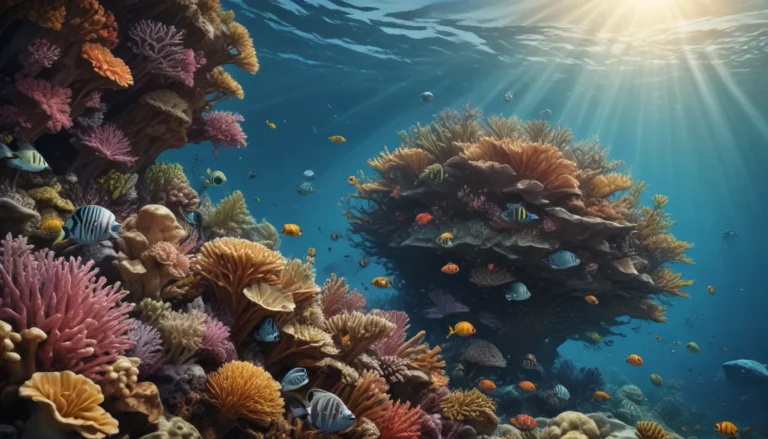The pictures we use in our articles might not show exactly what the words say. We choose these pictures to make you interested in reading more. The pictures work together with the words but don’t take their place. The words still tell you the important facts.
The Aral Sea, once a majestic inland body of water in Central Asia, has experienced a dramatic decline in size over the past few decades due to human activities, resulting in significant environmental and economic repercussions. This article will delve into the fascinating world of the Aral Sea by exploring its history, current state, and ongoing efforts to revive this ecological disaster. From the causes of its decline to the impact on local communities and wildlife, the story of the Aral Sea serves as a cautionary tale about the delicate balance between human progress and environmental preservation.
The Magnificent Aral Sea
The Aral Sea was once one of the four largest lakes in the world, spanning an area of approximately 68,000 square kilometers in Central Asia. Its vast expanse and rich biodiversity made it a vital source of sustenance and livelihood for the surrounding communities.
Shrinking Since the 1960s
Since the 1960s, the Aral Sea has been steadily shrinking due to excessive irrigation for agriculture. This has led to a significant decrease in the inflow of rivers that feed the sea, causing it to shrink dramatically over the years.
Environmental Disaster Unfolding
The decline of the Aral Sea is considered one of the world's greatest environmental disasters, with severe ecological and socio-economic consequences in the region. The exposed seabed has released toxic chemicals, salt particles, and dust storms, impacting the health and well-being of local communities.
A Divided Sea
The Aral Sea is now divided into the North Aral Sea and the South Aral Sea as it shrank, splitting into two separate bodies of water.
Signs of Recovery
Efforts to restore the North Aral Sea have shown signs of success, with water levels and marine life slowly returning to the area. However, challenges remain in reviving the entire ecosystem.
Impact on Communities
The shrinking of the Aral Sea has devastated local economies, displaced communities, and led to health problems. The once-thriving fishing industry has been decimated, leaving many without a source of income and food.
Unique Climate of the Region
The Aral Sea region had a unique climate influenced by the sea, providing a more moderate temperature range and higher humidity. However, with the sea's shrinkage, the climate has become more extreme, affecting the local environment.
Health Concerns for the Population
The increased salinity and toxic chemicals in the remaining water have caused various health issues for those living in the Aral Sea region, highlighting the urgent need for environmental remediation.
Economic Fallout
The decline of the Aral Sea has had a significant economic impact, leading to the collapse of local industries dependent on the sea. The loss of livelihoods has further exacerbated the socio-economic challenges in the region.
Restoration Efforts Underway
Various international organizations and governments are working together to implement measures to restore the Aral Sea and mitigate the environmental and social consequences of its decline. These efforts aim to revive the ecosystem and support the affected communities.
Lessons Learned
The Aral Sea crisis serves as a cautionary tale, emphasizing the importance of sustainable water management and the potential consequences of human activities on the environment. It symbolizes the urgent need for global environmental awareness and collaborative action to protect our planet's vital resources.
Conclusion: Hope for Redemption
In conclusion, the story of the Aral Sea stands as a poignant reminder of the fragility of our natural environment and the repercussions of unsustainable practices. Despite its challenges, ongoing restoration projects offer hope for the Aral Sea's revival and the recovery of its ecosystem. The tragedy of the Aral Sea calls for a collective effort from individuals, governments, and organizations to prioritize environmental preservation and restoration for a sustainable future.
FAQs: Exploring Further
- Causes of Shrinkage: The shrinkage of the Aral Sea was primarily caused by excessive water diversion for irrigation projects in the mid-20th century.
- Environmental Consequences: The shrinkage has resulted in increased salinity levels, loss of biodiversity, desertification of surrounding areas, and adverse health effects on local populations.
- Restoration Efforts: Ongoing projects focus on water conservation, reforestation, and environmental rehabilitation to restore the Aral Sea.
- Feasibility of Restoration: While complete restoration may be challenging, positive outcomes from current efforts provide hope for the recovery of the Aral Sea's ecosystem.
- Individual Contributions: Supporting conservation organizations, practicing water conservation, and advocating for sustainability are ways individuals can help protect the Aral Sea.
- Lessons Learned: The Aral Sea disaster underscores the importance of considering long-term environmental consequences and sustainable water management practices.
- Community Impact: The shrinking sea has led to unemployment, reduced resources, and health risks for local communities, highlighting the urgent need for intervention.
As we contemplate the Aral Sea's tragic narrative, we are reminded of the imperative to protect and preserve our natural wonders. By learning from past mistakes and promoting sustainable practices, we can strive towards a future where environmental balance is upheld, ensuring the well-being of both ecosystems and communities. Let the story of the Aral Sea inspire us to become better stewards of our environment, fostering a world where nature thrives and humanity prospers in harmony.






